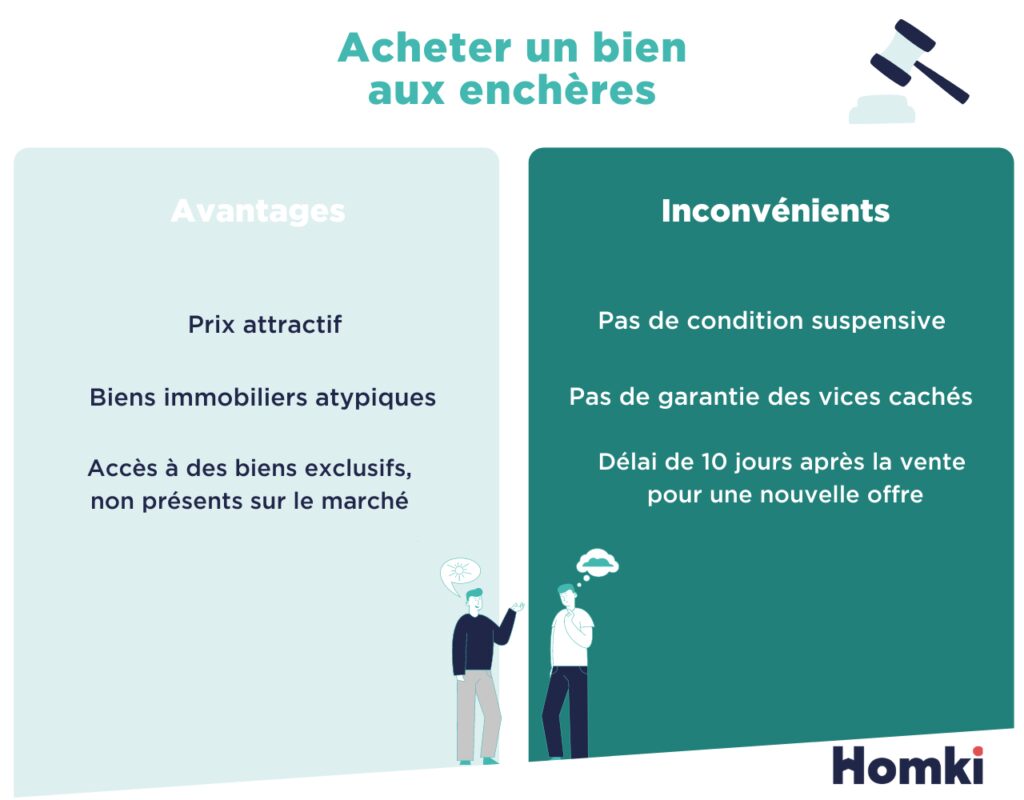In this article, we'll explore the pros and cons of buying land amicably. Is it an attractive option for potential buyers, or is it a risky decision? Discover the strengths and pitfalls of this method of land acquisition.
How does an SCI work? (Complete Guide)
[arve url="https://www.youtube.com/embed/ASNlHsniREk "/]
What are the risks of buying land?
The risks of buying land can be numerous and important to consider.
First of all, it's essential to check that the land is legal and compliant with town planning regulations and the necessary permits. Problems such as building restrictions, easements or land disputes can compromise the project.
Next, we need to ascertain the condition of the soil. Geotechnical studies are essential to detect any risks of landslides, flooding or unstable ground that could affect the stability of the future construction.
In addition, it's a good idea to find out about the infrastructure and utilities available in the area. Lack of access to water, electricity, gas or sewage networks can result in significant additional costs for connection work.
It is also advisable to check whether the land is located in an area prone to natural hazards such as floods, earthquakes or fires. These factors can have an impact on the safety and viability of the project.
Finally, it's important to carry out a market study to ensure the profitability of the project. A poor location, a saturated market or insufficient demand can make it difficult to resell or develop the land.
In conclusion, buying land involves risks that must be carefully analyzed and assessed before making a decision. It is advisable to consult real estate professionals and carry out all the necessary checks to avoid future problems.
What's the point of buying land that can't be built on?
The value of buying land that can't be built on can vary according to the buyer's needs and objectives. Here are a few possible reasons:
1. Future investment : Some people buy non-constructible land in the hope that its value will increase over time. They may speculate that the land could be reclassified for future construction.
2. Recreational use : Undeveloped land often offers an unspoilt natural environment, ideal for leisure activities such as hiking, camping or hunting. Buying such land can provide a space to enjoy nature and relax.
3. Environmental protection : Some buyers choose to acquire land that cannot be built on to protect it from future development, thus helping to preserve biodiversity and the local ecosystem.
4. Agriculture and gardening : In some cases, the purchase of non-constructible land may be motivated by agricultural or gardening projects. Such land can be used to grow food or create ornamental gardens.
It's important to note that buying land that can't be built on also presents legal limitations and constraints. Potential buyers should find out about local regulations before proceeding with the purchase.
What are the constraints of a subdivision?
Subdivision constraints are the rules and regulations that must be respected when building and developing a group of houses or buildings in the same area. These may vary according to the guidelines of local authorities and homeowners' associations.
Here are some of the most common constraints:
1. Architectural restrictions : Some subdivisions impose strict restrictions on the architectural style of houses, in order to maintain a certain visual harmony in the neighborhood. These restrictions may concern the size, height, building materials or color of the houses.
2. Town planning rules : Subdivisions must generally comply with current town planning regulations, particularly with regard to building density, distances between buildings, green spaces and community facilities.
3. Easements : Some subdivisions may include servitudes, i.e. rights of passage or use that are attached to the land. For example, there may be an easement allowing residents to access a public road.
4. Environmental standards : Subdivisions can also be subject to environmental standards, such as the use of sustainable materials, the installation of energy-saving systems or the creation of zones to protect local flora and fauna.
5. Co-ownership rules : If the development includes common areas such as gardens, parking lots or playgrounds, it may be subject to co-ownership rules that define the rights and duties of residents in relation to these common areas.
It's important for future homeowners to familiarize themselves with all these constraints before buying a plot of land or a house in a subdivision, to make sure they comply with these rules.
What happens when you buy land?
When buying land, there are several important steps to follow. Here's an overview of the process:
1. Site search and selection : First of all, you need to define your search criteria, such as location, plot size and price. Then, you can consult real estate ads or contact specialized agencies to find several options that match your criteria.
2. Feasibility check : Once you've identified a plot of land that interests you, it's important to check its feasibility. This means making sure that the land is suitable for construction, and that there are no particular restrictions related to zoning or land use.
3. Price negotiation : If the land meets your expectations and is feasible, you can enter into negotiations with the seller to agree on the final price. It is advisable to seek the advice of a real estate expert at this stage.
4. Signature of the preliminary sales agreement : Once you've agreed on the price, you need to sign a compromis de vente. This document is binding on both parties and sets out the terms of the transaction. It is advisable to call on the services of a notary when drawing up this contract.
5. Completion of administrative formalities : Once you've signed the compromis de vente, you need to start gathering the documents you need to finalize the transaction. This may include documents such as the certificat d'urbanisme, the cadastral plan, building permits, etc.
6. Signature of the deed of sale : Once all the administrative formalities have been completed, you can sign the final deed of sale at the notary's office. This step formalizes the transaction and transfers ownership of the land to the buyer.
7. Payment : Once the deed of sale has been signed, you must pay the agreed price. This can be by bank transfer or cashier's cheque.
8. Transfer of property rights : Finally, once payment has been made, ownership rights are transferred to the buyer, who officially becomes the new owner of the land.
Bear in mind that these steps may vary depending on the country or region in which you are buying the land. It is therefore important to find out about the legal and administrative specifics of the place where you are buying.
In conclusion, the amicable purchase of land offers a number of advantages benefits and disadvantages. On the one hand, this gives buyers greater freedom to negotiate the terms of purchase, and possibly to benefit from a more advantageous price. It also avoids the delays and complications associated with public auctions and sales.
On the other hand, there are some disadvantages to consider. The absence of a rigorous legal framework can lead to disagreements between buyer and seller. What's more, the buying process can take longer, as negotiations can be more protracted. Finally, it is essential to carry out a thorough evaluation of the land to avoid any future problems related to the quality or legality of the property.
In short, it's important for potential buyers to carefully weigh up the advantages and disadvantages of an amicable land purchase before making a decision. It is advisable to seek the assistance of a competent professional to ensure that all the necessary precautions are taken.








